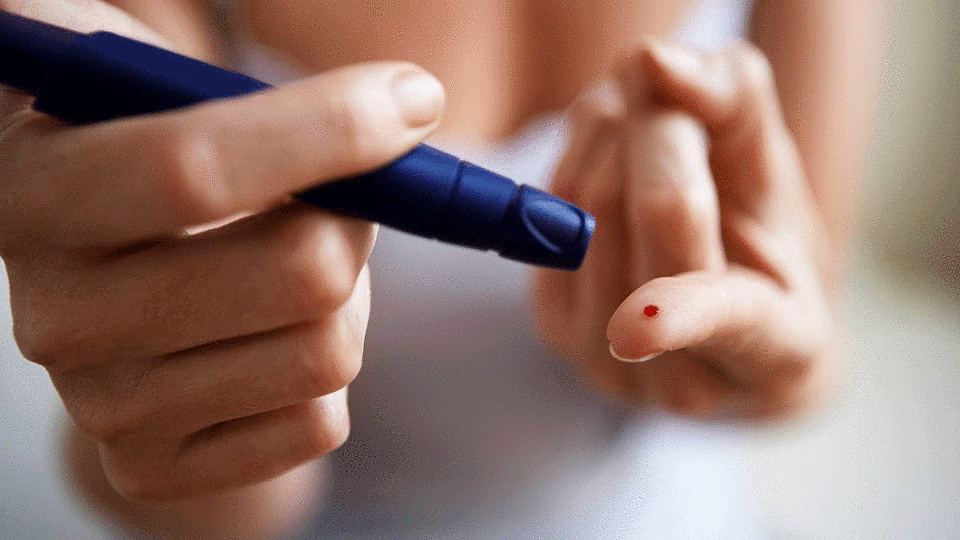The scale doesn’t lie—but it doesn’t tell the whole story.
You might be eating better, exercising more, and still seeing the same number each morning. It’s frustrating, discouraging, and, as it turns out, possibly misleading.
For decades, weight has been treated as a primary marker of health. But a number on the scale says little about inflammation, cardiovascular risk, or metabolic dysfunction—factors that often shift before any visible weight loss appears.
That’s why more people are turning to at-home biomarker testing—health tracking that looks beneath the surface, revealing internal changes long before they’re visible in the mirror or on the scale.
Colin Godby, an engineer and father of two, tested his blood out of curiosity, not concern. What he found was unexpected—and alarming.
The at-home test revealed that Godby had hereditary hemochromatosis, a genetic condition that causes iron to accumulate in the body. Left untreated, it can lead to liver disease, heart problems, and other complications. It was a diagnosis that standard labs hadn’t caught—and likely wouldn’t have.
What stood out to Godby wasn’t just the result—it was the realization that he might never have discovered the issue through routine care. He hadn’t planned to see a doctor, and even if he had, a ferritin test likely wouldn’t have been part of a standard workup.
From COVID-19 Swabs to Full Panels
During the COVID-19 pandemic, millions of people swabbed their noses at home and waited for COVID-19 test results—an experience that introduced many to the idea of testing health at home.
“[COVID-19] normalized the idea that you could test yourself and act on the results,” Jordan Moradian, product and growth manager at direct-to-consumer testing company SiPhox Health, told The Epoch Times.
Even before the pandemic, health tracking was gaining traction among wellness enthusiasts. Moradian said COVID-19 accelerated the trend, which was fueled by renewed interest in immunity, more time at home, and popular science voices such as Andrew Huberman.
Today, companies such as SiPhox, Everlywell, LetsGetChecked, and questhealth.com offer clinical-grade diagnostics at home. Tests typically use finger-prick or saliva samples to measure everything from blood sugar and inflammation to hormones and cholesterol—and deliver results in days.
Beyond the Doctor’s Office
At-home blood testing gives people more control over their health, often filling gaps left by conventional care.
Most annual checkups include only basic labs—typically a lipid panel and perhaps a comprehensive metabolic panel. However, these often exclude markers of inflammation, insulin resistance, hormone balance, or cardiovascular risk. As a result, early signs of chronic disease may go unnoticed.
“Many people turn to at-home biomarker tracking to test markers their physicians may not typically order,” Moradian said.
In places where diagnostics are limited, these tools offer a fuller health picture before a clinical visit.
The appeal is not just access, but speed. Instead of waiting months for a follow-up panel, users can adjust their lifestyle and retest within weeks, getting near real-time feedback on what’s working.
Moradian identified three groups driving demand: people recovering from health scares who want early warnings; younger, data-driven users testing diets or supplements; and those in “medical deserts” with limited access to care.
Some of the most revealing data come from what routine checkups miss, he said. Many users discover elevated apolipoprotein B—a key heart disease marker—even with normal cholesterol. Others uncover hormonal imbalances, such as low testosterone, rarely screened for in standard exams.
“A common misconception is that at-home testing isn’t as accurate or reliable as clinical testing,” Moradian said. “In reality, reputable at-home tests employ rigorously validated methodologies and must meet strict regulatory standards.”
SiPhox processes tests through labs that comply with the Clinical Laboratory Improvement Amendments and that are accredited by the College of American Pathologists. These labs are federally certified for accuracy and oversight. The company reports a 95 percent to 99 percent match with standard venous draws, benchmarked quarterly against labs such as LabCorp and Quest Diagnostics.
One risk is over-testing. Like daily weigh-ins, frequent checks of glucose or inflammation can fuel anxiety over normal fluctuations.
“Frequent testing without proper context can lead to anxiety, over-analysis, and obsession with small, normal fluctuations,” Lufkin said. “Not every spike or dip is meaningful—bodies are dynamic.”
Another challenge is interpretation. Without a doctor’s guidance, users may make diet or supplement decisions based on a single number.
“Self-monitoring is intended to complement professional medical advice, not replace it,” Moradian said. “We encourage users to share their biomarker data with their health care providers, fostering collaborative decision-making.”










